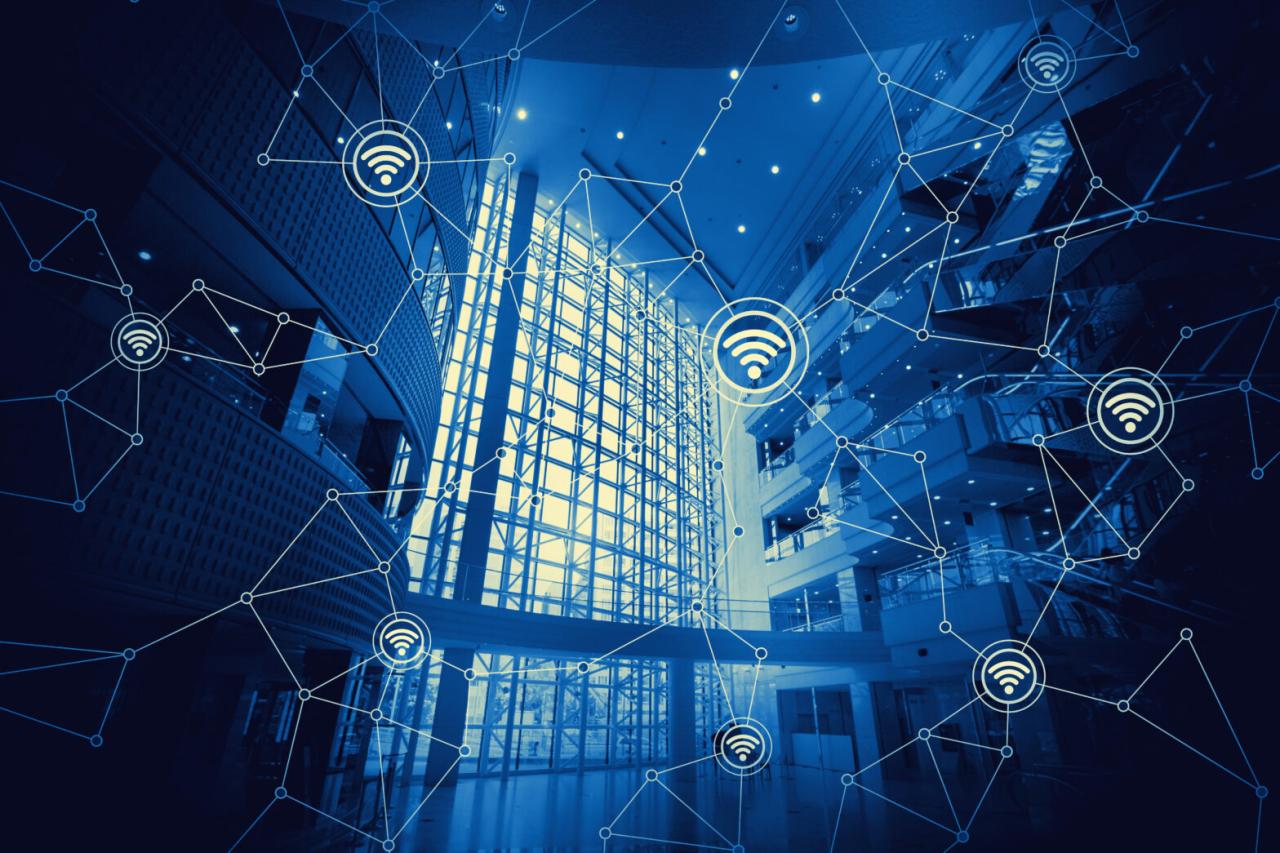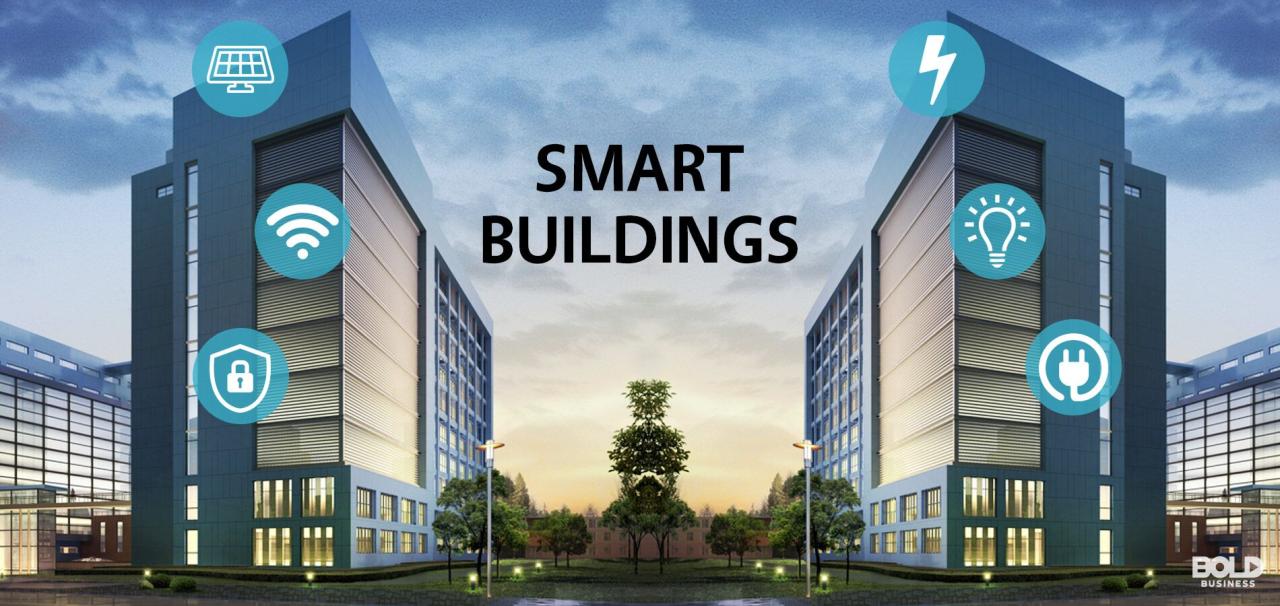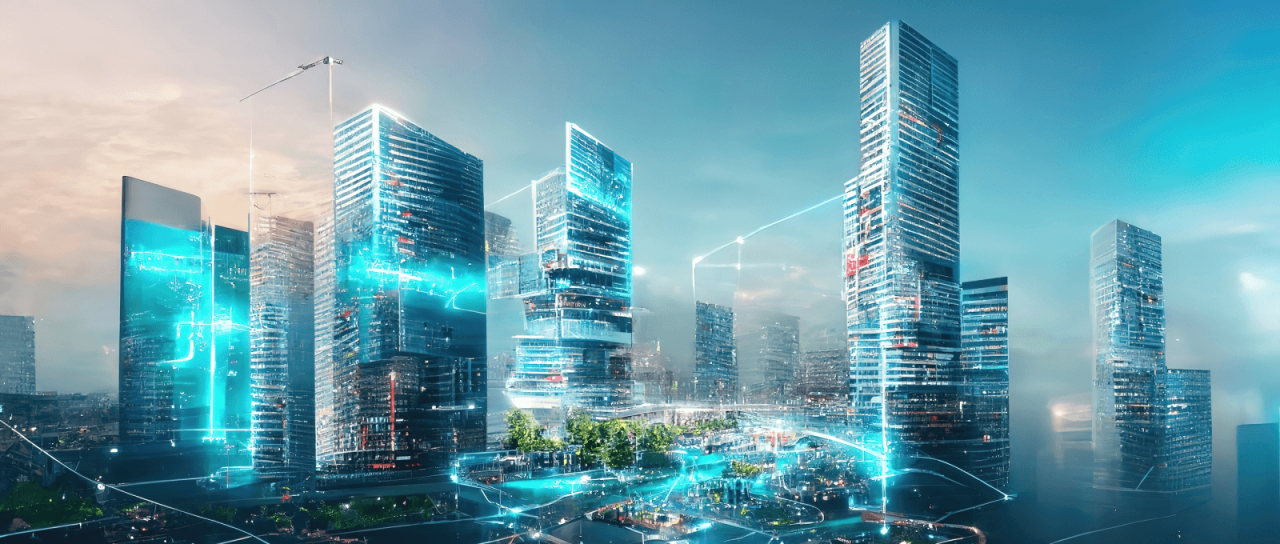As smart building technology in the US takes center stage, this opening passage beckons readers into a world crafted with good knowledge, ensuring a reading experience that is both absorbing and distinctly original.
Smart building technology has revolutionized the way buildings operate, offering advanced solutions for efficiency, sustainability, and security.
Overview of Smart Building Technology in the US
Smart building technology refers to the integration of various systems within a building to optimize its operations, improve energy efficiency, enhance security, and provide a better overall experience for occupants. These systems can include lighting, HVAC, security, and other building functions that can be automated and controlled remotely.Implementing smart building technology in the US brings numerous benefits, such as reducing energy consumption, lowering operating costs, increasing occupant comfort and productivity, and minimizing environmental impact.
By utilizing advanced sensors, data analytics, and connectivity, smart buildings can adapt to changing conditions in real-time, making them more efficient and sustainable.
Examples of Smart Building Technologies in the US
- Building Automation Systems (BAS): BAS allows centralized control of building functions such as lighting, HVAC, and security systems. It helps optimize energy usage, improve comfort levels, and streamline maintenance.
- Smart HVAC Systems: These systems use sensors and algorithms to adjust heating, cooling, and ventilation based on occupancy, weather conditions, and other factors. They can significantly reduce energy consumption while maintaining optimal indoor conditions.
- Occupancy Sensors: These sensors detect the presence of people in a space and adjust lighting, temperature, and airflow accordingly. They help save energy by ensuring that resources are only used when needed.
- Energy Management Systems (EMS): EMS monitor and control energy usage within a building, identifying opportunities for efficiency improvements and cost savings. They can track energy consumption in real-time and optimize usage patterns.
- Smart Lighting Systems: These systems use LED technology, motion sensors, and daylight harvesting to provide efficient and adaptive lighting solutions. They can reduce energy costs and enhance occupant comfort and productivity.
Infrastructure Requirements for Smart Buildings

Smart buildings in the US rely on a robust infrastructure to support the implementation of various technologies aimed at enhancing efficiency, sustainability, and occupant comfort. This infrastructure involves a combination of hardware, software, and connectivity solutions to enable seamless operation.
Role of IoT Devices, Sensors, and Connectivity
IoT devices, sensors, and connectivity play a crucial role in the functioning of smart buildings. These components collect real-time data on various aspects such as occupancy, temperature, humidity, and energy consumption. By analyzing this data, smart building systems can optimize operations, improve energy efficiency, and enhance overall building performance.
The interconnected nature of IoT devices and sensors allows for centralized control and monitoring, enabling building managers to make informed decisions in real-time.
Integration of Energy Management Systems
Energy management systems are a key component of smart buildings, helping to monitor and control energy usage effectively. These systems integrate with sensors and IoT devices to track energy consumption patterns, identify areas of inefficiency, and automate energy-saving measures. By implementing energy management systems, smart buildings can reduce operational costs, minimize environmental impact, and ensure a comfortable indoor environment for occupants.
Sustainability and Energy Efficiency in Smart Buildings

Smart building technology plays a crucial role in promoting sustainability efforts in the US by integrating various energy-efficient systems that help reduce carbon footprint and energy consumption. These advancements not only benefit the environment but also contribute to cost savings for building owners and occupants.
Impact of Energy-Efficient Systems
- Energy-efficient systems such as smart lighting, HVAC, and automated controls help optimize energy usage within smart buildings, resulting in reduced energy consumption and lower utility bills.
- By monitoring and adjusting energy usage based on occupancy levels, weather conditions, and other factors, smart buildings can significantly decrease their carbon footprint and overall environmental impact.
- Implementing energy-efficient systems also enhances the indoor environmental quality, leading to improved occupant comfort, productivity, and well-being.
Integration of Renewable Energy Sources
- Smart buildings often incorporate renewable energy sources like solar panels, wind turbines, and geothermal systems to generate clean and sustainable power on-site.
- By harnessing renewable energy, smart buildings reduce their reliance on traditional fossil fuels, further lowering greenhouse gas emissions and promoting a more sustainable energy mix.
- Integrating renewable energy sources not only helps smart buildings operate more sustainably but also enhances their resilience to power outages and disruptions in the grid system.
Security and Privacy Concerns in Smart Building Technology
Smart building technology brings numerous benefits, but it also raises concerns about security and privacy. As buildings become more connected and data-driven, it is essential to address potential risks and vulnerabilities to ensure the safety and confidentiality of sensitive information.
Potential Security Risks
- Unauthorized access: Hackers may exploit vulnerabilities in smart building systems to gain unauthorized access to sensitive data or control building functions.
- Data breaches: Inadequate security measures can lead to data breaches, exposing personal information or valuable data to malicious actors.
- Physical security threats: Connected devices in smart buildings can be susceptible to physical tampering, posing a risk to the overall security of the building.
Measures for Data Privacy and Cybersecurity
- Encryption: Implementing strong encryption protocols for data transmission and storage can prevent unauthorized access to sensitive information.
- Access control: Restricting access to critical systems and data through user authentication and authorization mechanisms can help prevent unauthorized use.
- Regular audits and updates: Conducting regular security audits and applying software updates can help identify and mitigate security vulnerabilities in smart building systems.
Importance of Secure Network Protocols and Encryption
Utilizing secure network protocols, such as Transport Layer Security (TLS), and encryption mechanisms is crucial to safeguarding data integrity and confidentiality in smart building systems. Secure communication channels ensure that data transmitted between devices and systems remains protected from interception or tampering, enhancing overall cybersecurity posture.
Final Review

In conclusion, smart building technology in the US represents a cutting-edge approach towards creating sustainable, energy-efficient, and secure buildings. The integration of innovative technologies continues to shape the future of building infrastructure and operations.
Q&A
What is smart building technology?
Smart building technology refers to the integration of various systems and technologies to enhance the operational efficiency, sustainability, and security of buildings.
How does smart building technology contribute to sustainability efforts in the US?
Smart building technology helps reduce energy consumption, optimize resource usage, and minimize environmental impact through advanced monitoring and control systems.
What are some common security risks associated with smart building technology?
Security risks include potential cyber attacks, data breaches, and unauthorized access to building systems, highlighting the importance of robust security measures.
Why is the integration of energy management systems crucial in smart buildings?
Energy management systems optimize energy usage, reduce costs, and enhance sustainability by monitoring and controlling energy consumption in real-time.